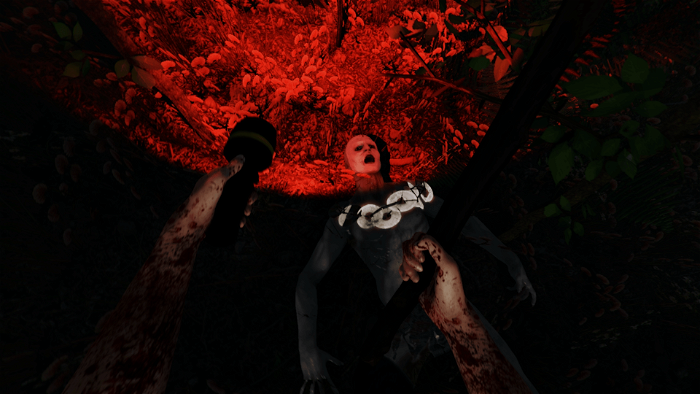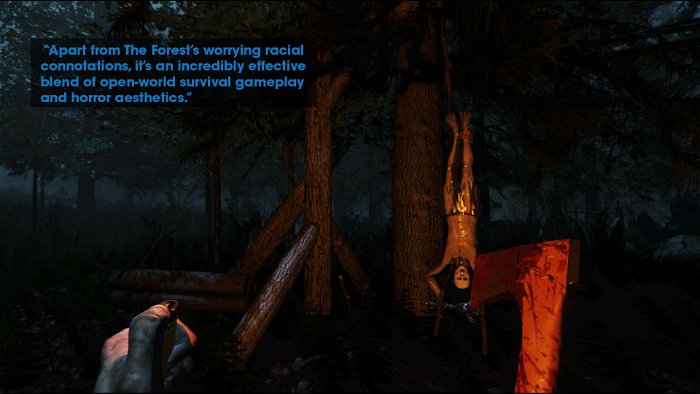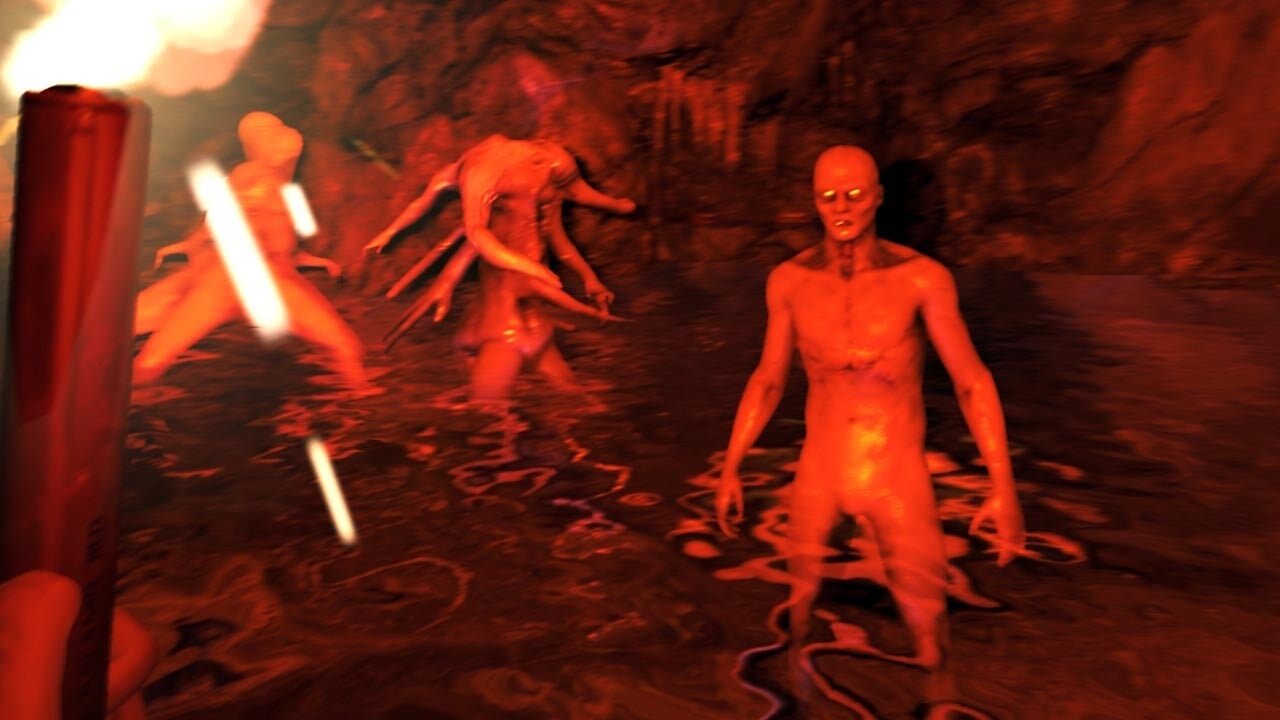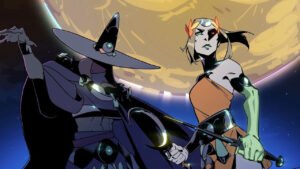The plane shudders once as it hits a patch of turbulence then nosedives spectacularly, entering into a rapid dive through rows of trees. The player looks to the right through the eyes of a man sitting next to a small boy who is now wide awake and bouncing in his seat. Waking from the crash, lying helpless in the aisle of the ruined aircraft, the player sees a tall man dressed in a loincloth pick up the child. The man’s eyes are pitch black and his face is marked with white paint. The screen goes dark again and when the player wakes up, assuming control of the silent protagonist, they’re left with no choice but to scrounge supplies from the plane and set out into the woods to investigate a sprawling, foreboding wilderness that seems to be watching them at every step.
Endnight Games’ The Forest is still in its alpha phase, but—as its first minutes make clear—it is a game designed to engender terror in its audience. Once the introduction is finished, the main character must immediately set to work chopping down trees with an axe, collecting stones and leaves, and getting acquainted with the two basic tenants of survival: finding food and creating shelter. The crafting system used to accomplish these goals is elegant, allowing players to either combine materials from a static screen displaying a backpack’s inventory or choose a structure from their survival handbook menu and add various materials to the incomplete work until it’s finished. And while exploring the world—playing around with item combinations and constructing buildings—is fun in its own right, the game offers an additional element that makes it stand apart from other open-world survival games.

Where The Forest is most successful—and, unfortunately, creates a worrying problem elaborated on below—is in its enemy design. The setting is host to not just birds, rabbits, and iguanas, but also an indigenous population that infected with something that makes them more than a little hostile toward the player. The Forest refers to these characters as “mutants,” but—aside from their glassy black eyes and a handful of special variants who seem to have been taken over by an opaque slime—the enemies look very much like real human beings. This wouldn’t be interesting, in and of itself, if it wasn’t for the fact the artificial intelligence displayed by the mutants is shockingly convincing. On a first venture into the world, I decided to create a lean-to and firepit near the crashed airplane, since its broken hull held more supplies than my character could carry. After getting to work on my base, I heard snapping branches in the woods and, turning around to investigate, found a group of half-naked women and men unnervingly monitoring my character. They seemed peacefully curious at first, but, as soon as I looked away, launched into a vicious attack from all sides that knocked the protagonist unconscious. In my time with the game, I’ve also seen mutants carrying out single-file patrols, running through the forest in small groups, and—most disconcertingly—concealing themselves in the foliage or within the trees to watch my character building shelter and campfires. Whether the behaviour of the enemies is meticulously programmed or just a well-played trick on the player, the end result is the same: a sense of being constantly hunted by smart antagonists who, even when not outright attacking the player, are always nearby, watching and waiting for an opportunity to strike.

As much as The Forest’s enemies are key to the experience, though, the player is often forced to wonder, at least a bit, about the responsibility of pitting a white protagonist against waves of “mutants” who, in appearance, closely resemble real aboriginal people. Infectious curse or not, this trope relies on centuries of stereotypical perceptions of indigenous populations as mindless “savages” and the white explorer as a rationalist victim of brutality. The enemies may be dubbed mutants, but their appearance is modelled so heavily on actual aboriginal groups that the end result—whether it’s intentional or accidental—is disturbing. The final version of the game absolutely needs to address this issue in some narrative form because, as it stands, the enemy is unsettling for reasons other than what we can assume Endnight Games is aiming for.
It’s a shame that this (pretty substantial) problem exists because, apart from The Forest’s worrying racial connotations, it’s an incredibly effective blend of open-world survival gameplay and horror aesthetics. The eponymous forest is a beautifully rendered place, the sprawling landscape at once beautiful and ominous; and balancing the mundane realities of survival (like eating, staying warm, and sleeping) with the overt tension of outsmarting an intelligent but ferocious enemy is enthralling. It’s only the implications created by The Forest’s mutants that are a cause for concern.




